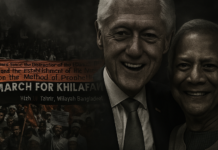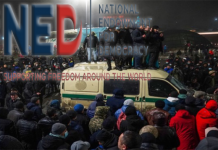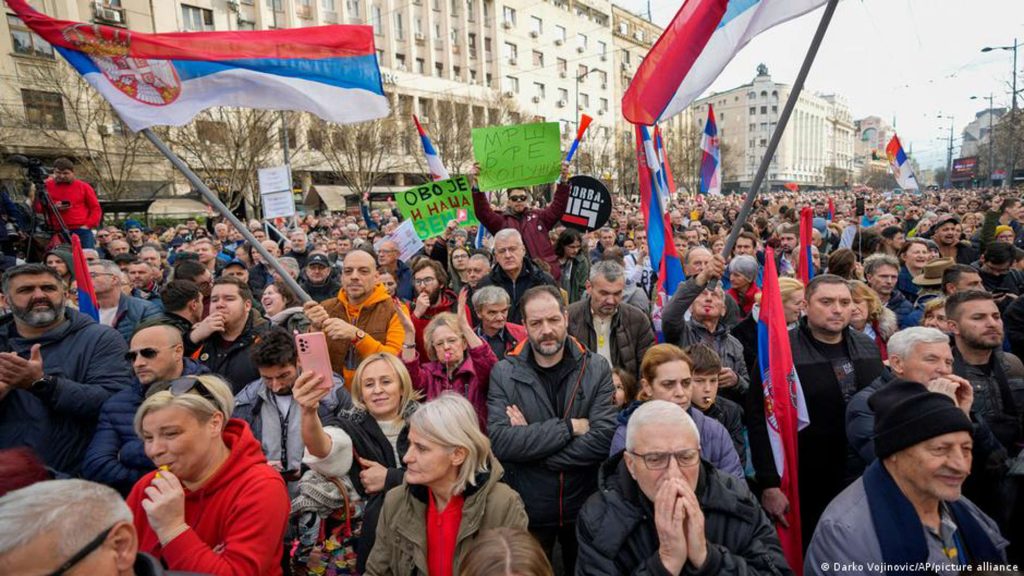
On December 17th, Serbian voters went to the polls in a snap general election. The result was President Aleksandar Vucic’s ruling Serbian Progressive Party (SNS) coalition regained its parliamentary majority. Immediately, pro-Western, liberal opposition party Serbia Against Violence (SPN) declared widespread fraud in the government’s favor, and committed to convening protests around government buildings in Belgrade until authorities agreed to hold a new election.
So it was that thousands took to the streets, night after night. This culminated on December 24th with protesters, led by SPN leaders, attempting to forcibly gain access to Belgrade town hall, in scenes evocative of January 6th in Washington, D.C. What they hoped to achieve by breaching the building is unclear but, in a hugely symbolic twist, they were unable to do so and were fought back by riot police. About three dozen attendees were arrested for vandalism and violence.
The city has remained peaceful and calm ever since. Yet, these rather trivial events have been widely exploited by a variety of domestic and international actors to support conflicting narratives. For example, Russian state media have framed the disturbance as a Maidan 2.0 in the making, which Vladimir Putin personally averted by warning Vucic that Western-sponsored actors were plotting sedition.
The President himself has touted this alleged intervention, which plays into his persona as both a close confidante of the Kremlin, and defender of Serbs from foreign incursions. In reality, the protests were widely publicized in advance, overseas sponsorship of the groups and individuals involved was openly advertised, and there was zero prospect of the demonstrators achieving their stated goals, let alone unseating Vucic. As such, there was seemingly nothing to warn about.
One would not know that from Western media reporting on the events though, or the hysterical chorus of foreign “think tank” pundits, who claim a revolution is dawning in Belgrade. They grossly exaggerated the size of protest crowds and openly fantasized about the downfall of Vucic—whom they brand a Kremlin confidante, and Putin clone. In doing so, they perpetuate the false myth of eternal Serbian-Russian brotherhood, as the country is on the verge of being incorporated into the EU and NATO, despite widespread public opposition.

The truth of what happened is at once more anodyne, and more sinister, than any of these narratives suggests. In effect, Belgrade’s Western-backed opposition tried to take on the country’s Western-backed government, and failed, because their Western sponsors did not want them to succeed. The only victor was the U.S. Empire. And the ultimate victims are the Serb public.
Revolution by Marketing
While the country may be small, Serbia is of enormous geopolitical significance. Throughout its history, multiple major powers have without success attempted to subjugate the country and its population. During the 1990s, relentless media demonization, Western-supported proxy wars in the former Yugoslavia, crippling international sanctions, an illegal 78-day-long NATO bombing campaign, and a U.S.-orchestrated coup immediately following that awful decade, were all concerned with finally achieving that end, for the U.S. Empire’s benefit.
After NATO criminally bombed Belgrade starting in March 1999, Yugoslavia’s long-time leader Slobodan Milosevic was ripe for removal. Accordingly, the National Endowment for Democracy (NED), a U.S. government regime-change agency that avowedly does overtly what the CIA once did covertly, USAID, and other U.S. government entities—including the CIA—began pumping tens of millions of dollars into ensuring his defeat in Yugoslavia’s September 2000 election.
As a Washington Post investigation documented in extraordinary detail in December that year, U.S. advertising whizzes typically accustomed to marketing chewing gum and soda pop were employed to concoct catchy slogans, PR stunts, and other innovative communications strategies to undermine Milosevic. Extensive opinion polling and countless focus groups were secretly conducted to road test and perfect campaign strategy in real time.
Concurrently, scores of parliamentary candidates and activists were covertly coached in the art of staying “on message” to field questions from journalists, and effectively rebut the arguments of Milosevic supporters. Extensive training and support were likewise provided to student activist collective Otpor (Serbian for “Resistance”). They learned how to organize strikes and protests, communicate publicly via symbols, “overcome fear,” and undermine government authority through disruptive, non-violent means.

USAID provided 5,000 cans of spray paint for student activists to daub anti-Milosevic graffiti across the country. Otpor employed “a wide range of sophisticated public relations techniques, including polling, leafleting and paid advertising” on Washington’s dime. All their messaging was informed by U.S.-financed polling, which meant “at every moment, we knew what to say to the people,” one of the group’s activists boasted. An Otpor leader explained in 2005:
“Our idea was to use corporate branding in politics. The movement has to have a marketing department. We took Coca-Cola as our model.”
When the election’s official results were announced, pointing to Milosevic’s victory, mass strikes spread throughout Serbia, while riots engulfed Belgrade with Otpor at the forefront, claiming industrial-scale electoral fraud. Such was the groundswell, the President resigned in October. Six months later, he was arrested and taken to The Hague to stand trial for alleged war crimes. Washington threatened to withhold financial aid from Yugoslavia if he remained free. Milosevic died in custody in March 2006, before his trial concluded. The aid never materialized.
Milosevic’s downfall is dubbed the “Bulldozer Revolution,” due to iconic scenes during the much-publicized unrest of a wheel loader helping anti-government agitators occupy state buildings, and shield activists from police bullets. In a perversely ironic twist though, its driver quickly turned against the “Revolution.” Subsequent Western-imposed privatization decimated Yugoslavia’s economy, causing his successful independent business to fail and for him to go bankrupt. He subsisted until his dying day on meager state welfare payments.
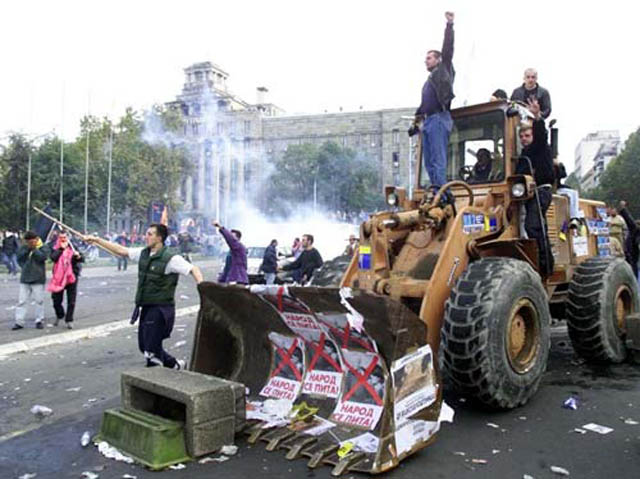
Stage-Managed Maidan
The legacy of the 1990s, and NED’s brazen actions, loom large today in Serbia. These events produced enduring national trauma, and widespread distrust of foreign meddling in Belgrade’s affairs among the overwhelming majority of the population. Serbs witnessed the same techniques of regime change used against them in 2000 that were redeployed in a series of “color revolutions” across the former Soviet sphere, which even Western foreign policy apparatchiks admit resulted in disaster for target countries.
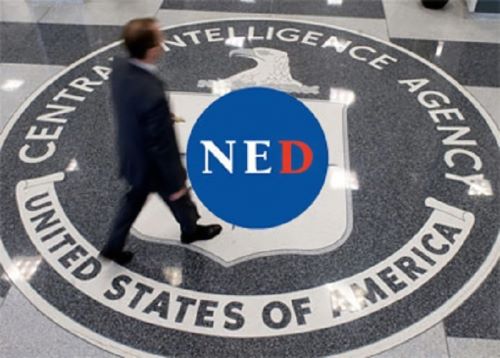
As such, when on December 22nd a detailed, 24-page report on alleged fraud in the election was published by the Center for Research, Transparency and Accountability (CRTA), a Belgrade-based NGO, many Serbs worried that Western powers were cooking up a new “Bulldozer.” A cursory glance at the organization’s donors makes clear why. They are a veritable who’s who of foreign foundations, intelligence agency fronts, and Western embassies, notorious for sponsoring color revolutions. Among them, NED and USAID.
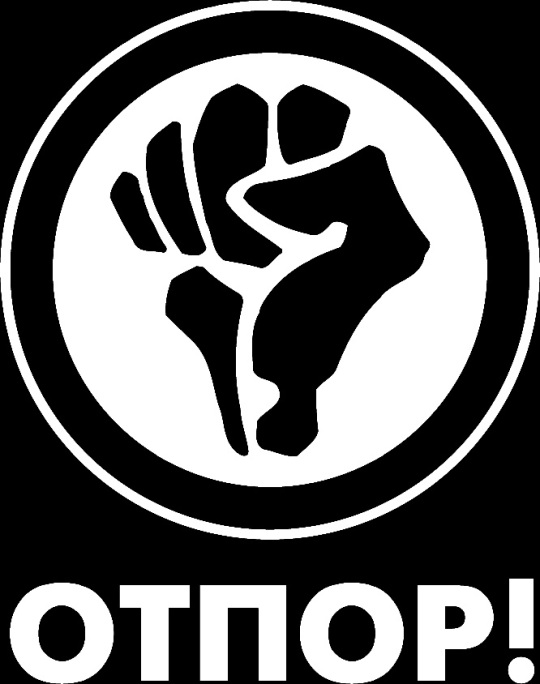
Those fears were only reinforced by some protesters openly brandishing banners bearing Otpor’s original logo, and in some cases the group’s name. They queasily nestled alongside signs intended for foreign audiences written in English, pleading for the West to come to the rescue, and EU flags. Such displays were absolute anathema to much of the public, greatly diminishing already limited sympathy for the opposition and demonstrators, and eliciting widespread calls to prevent “another Maidan” happening in Serbia.
It is now abundantly clear the protests lacked anything like the popular support necessary to pressure Vucic into an election rerun, much less force him from office. Most crucially though, their efforts were not endorsed by the U.S. embassy in Belgrade. On December 25th, Ambassador Christopher Hill issued a firm warning to the opposition to respect the official results, while harshly condemning the previous night’s violence and vandalism. The true ruler of Serbia had spoken. It was time for demonstrators to go home.
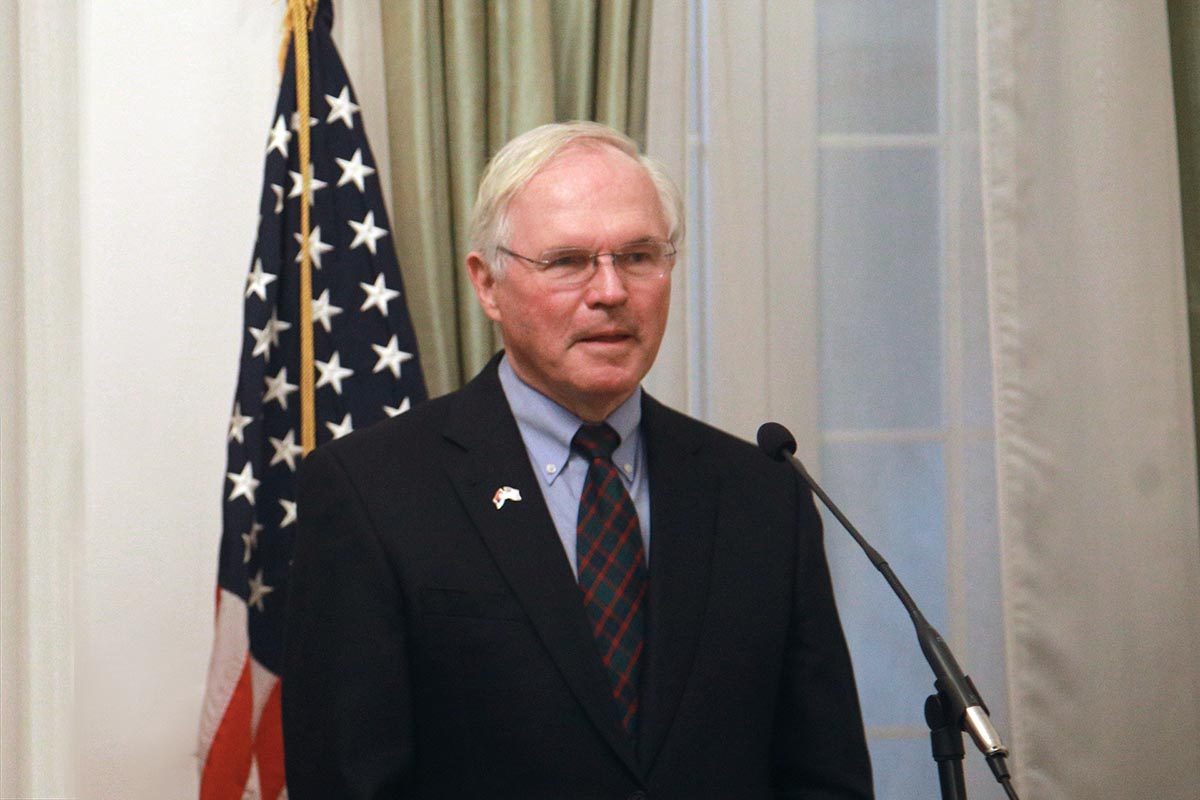
However, the memo evidently was not universally received. Several Western news outlets, including the BBC and Politico, continued to report on the unrest as if it were not only ongoing, but intensifying, and city-spanning. Articles and video segments frequently featured images and footage of protesters attacking Belgrade’s City Hall, with little to no clarity that the scenes actually took place on December 24th. One can only speculate whether this was deliberate.
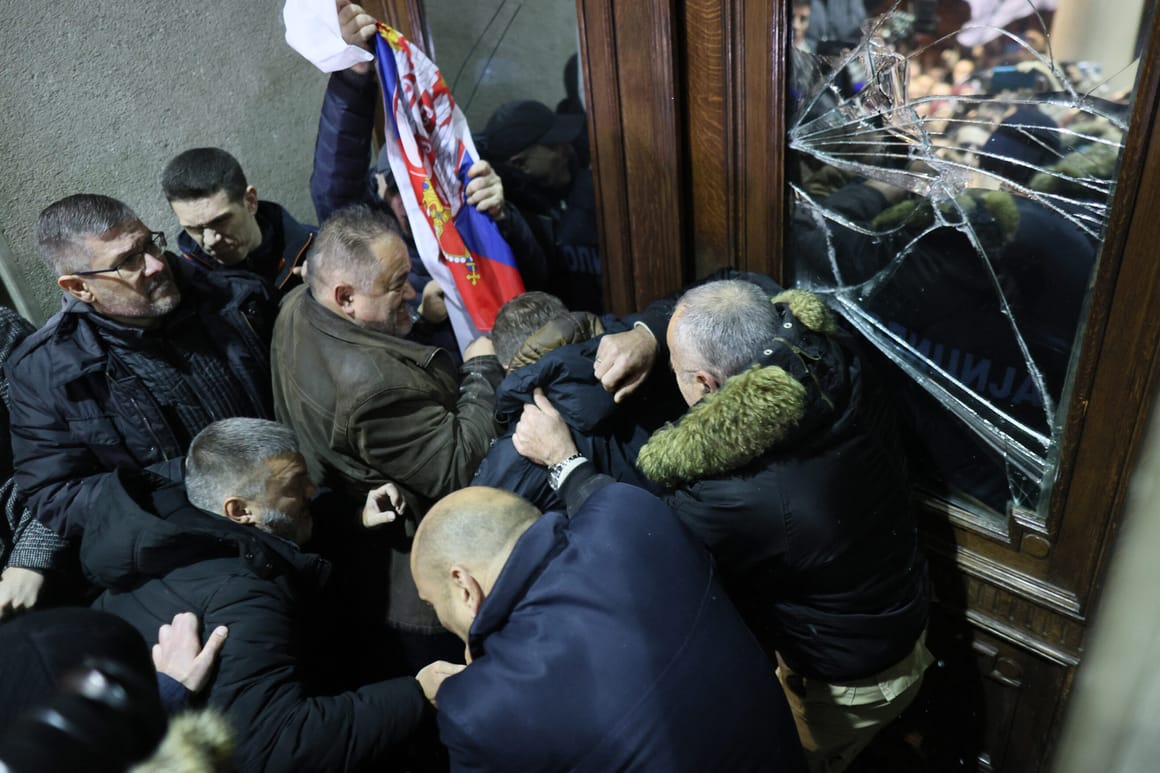
Meanwhile, many foreign social media users shared photographs of the vast crowds gathered outside Serbia’s parliament, actually taken during opposition protests in May, falsely suggesting they were contemporaneous, and urging the EU and U.S. to support the “revolution.” These posts have in some cases gained enormous traction. Apparently no one thought to conduct a reverse image search, or noticed leaves of trees in the photos are luscious green, amply indicating the scenes were not taken in December.
While protests continued after Hill’s intervention, they typically attracted only a few hundred people, while a handful of students set up tents in central city streets in an attempt to block traffic. Parallels with the tent occupation of Ukraine’s Freedom—now Maidan—Square during Kyiv’s NED-sponsored “revolution of dignity” are not lost on Serbs. It is abundantly clear these efforts are exclusively intended for Western media consumption.

Nonetheless, the extrapolative impact of such images on foreign audiences should not be underestimated. After Maidan demonstrations erupted in November 2013, NED financed the creation of Hromadske TV, which livestreamed the protests. Its output was duly recycled by many mainstream news outlets in reporting on the rebellion in Kyiv. Foreign audiences were led to believe, based on Hromadske’s slanted coverage, the opposition was wholly energized by concerns over human rights and democracy, and overwhelmingly—if not universally—popular.
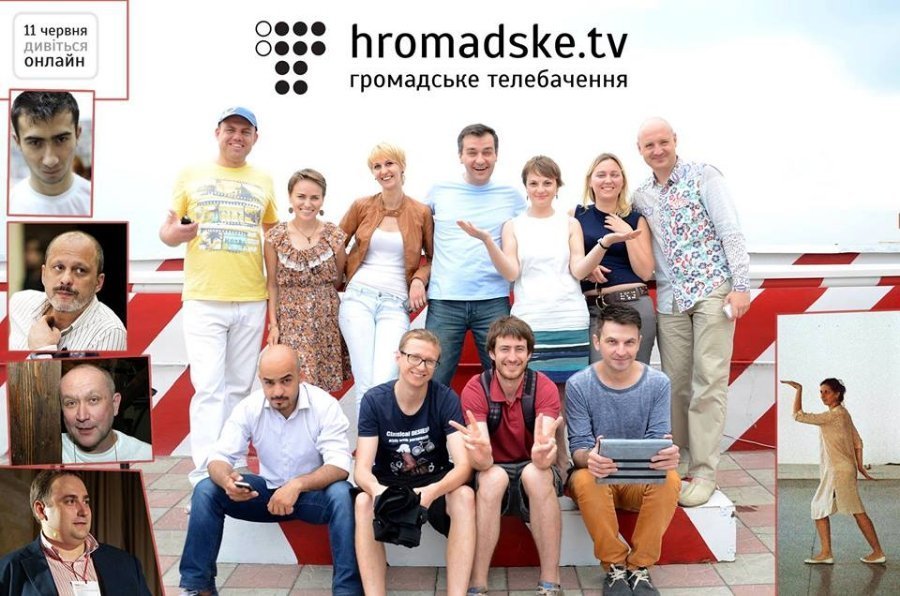
In fact, contemporary polls showed less than 20% of Maidan protesters were motivated by “violations of democracy or the threat of dictatorship,” Ukrainian President Viktor Yanukovych remained “the most popular political figure in the country,” and there was never overwhelming public support for the uprising. In fact, “quite large majorities” opposed it, due to “anti-Russian rhetoric and the iconography of western Ukrainian nationalism,” rife among demonstrators, “not [playing] well among the Ukrainian majority.”
One of the Serb student protesters arrested on December 24th, dubbed a “political prisoner” by the opposition and Western media, has now been released from custody, consigned to “house arrest” in his university dormitory. In several hagiographic interviews with foreign media, the flag of the Serbian Volunteer Corps, a fascist para-military group that collaborated with the Nazis during the genocidal Axis occupation of Yugoslavia, was displayed prominently on his bedroom wall.

“Serbia’s Jerusalem”
A startling success story of Serbia’s elections, not yet acknowledged by the Western media, was the triumph of WE—Voice of the People, a completely new political party established just weeks before. Formed by people not part of the political elite committed to opposing foreign influence in Belgrade and seeking to attract voters from both the right and left, it secured seats in parliament purely off the back of social media activity, and town hall meetings across the country.
The President has already invited WE to join his government, which the party refused, raising the prospect of an election rerun in the capital. The upstart movement has disrupted mainstream Serbian politics in other ways. On December 26th, WE leader Branimir Nestorović issued a statement accusing the administration and opposition of conspiring to stage the protests, in order to distract the country from Vucic’s quiet recognition of Kosovo government-issued vehicle license plates a day prior.
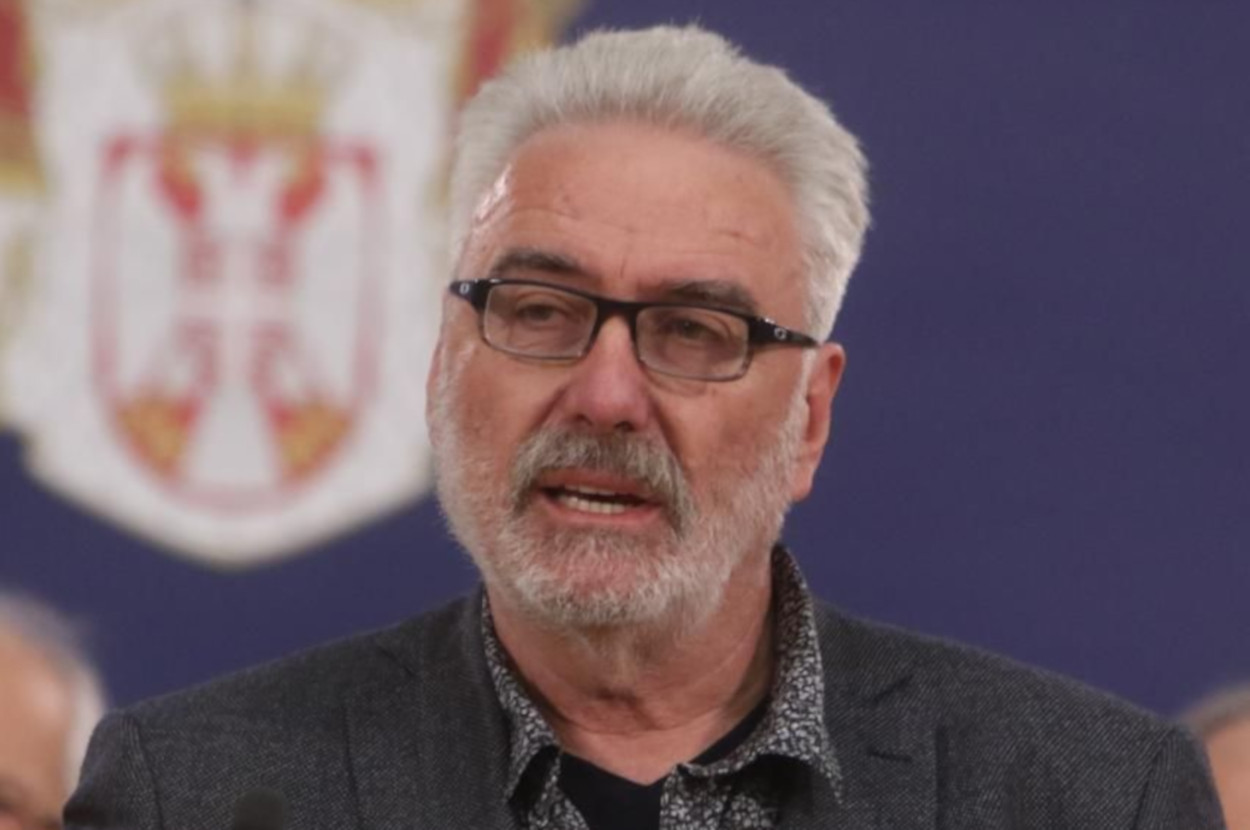
This development may seem trifling to outside observers, but it was hugely significant. Kosovo unilaterally declared independence in 2008, which successive Serbian governments have formally refused to accept. Belgrade’s constitution still categorizes the province—widely regarded as “the cradle of Serb civilization” and “Serbia’s Jerusalem”—sovereign Serb territory. Recognition of Kosovo license plates could de facto legitimize Pristina’s claims to be an independent state, divorced from Belgrade. It is therefore an extremely sensitive subject nationally, particularly among Kosovo’s northern Serb minority.
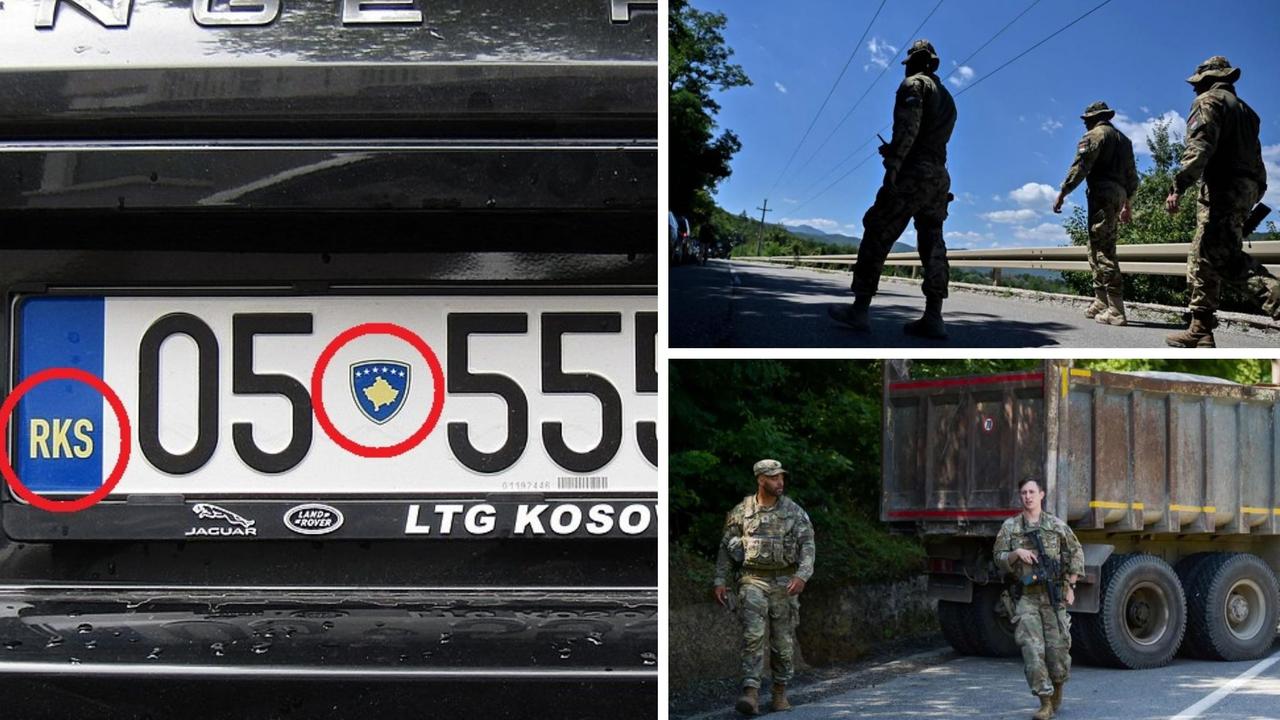
Neighborhood disputes over the matter produced a volatile situation in August 2022, with clashes between Kosovan police and local Serbs. Yet, despite much rhetoric to the contrary, Vucic has been repeatedly willing to cede ground on Kosovo to the West. It is precisely due to his malleability on the issue—and EU and NATO membership, which the overwhelming majority of Serbs oppose—that Western powers permitted his rise to the presidency in the first place, and continue to bolster his rule.
Should a Serbian leader fail to acquiesce to the West’s demands, the consequences may be literally fatal. In 2003, Prime Minister Zoran Dindic was assassinated in broad daylight while exiting his vehicle outside government headquarters in Belgrade. Despite 11,000 arrests, several suspects convicted in absentia remain at large, and many—including Dindic’s former bodyguard, himself severely injured in the shooting—believe the official narrative to be fraudulent.
Dindic entered office as Washington’s guy. He had a lengthy history of calling for total Kosovan autonomy, and it was widely expected he would obediently inquire “how high?” whenever ordered to jump by the EU and U.S. However, in his final months in office, he made an abrupt about-face, speaking openly about Western powers conspiring to wrest Pristina from Belgrade’s grasp, and proposed crafting a federal union of Serb states, with the Serb-majority areas of neighboring Bosnia and Montenegro.
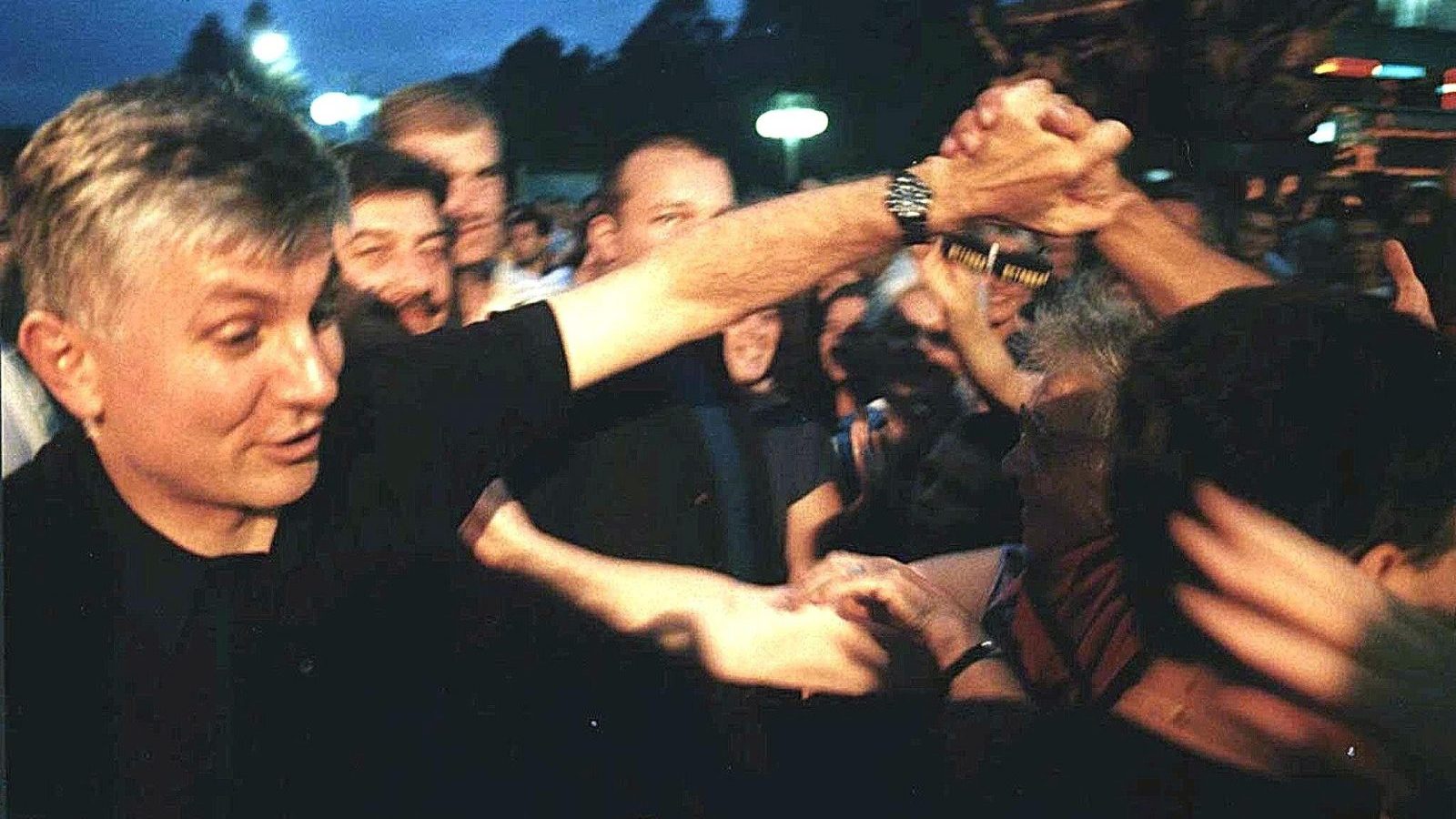
It may be that, in addition to providing a helpful smokescreen and rallying the public around the government while it inches closer to recognition of Kosovo independence, the NED-sponsored commotion was intended as a warning shot against Vucic: to remind him he is only in power because the West permits him to be, only permits him to be if he acts according to their will, and he can be replaced with a hand-picked puppet at any time if he fails in that mission.
This is precisely what happened in Georgia in March 2023. After the government announced plans to compel NGOs to disclose their sources of income, an army of protesters threatened to overrun parliament, in direct correlation with pronouncements of U.S. officials. Message received, Tbilisi dropped the legislation, but the threat did not disappear. In September, authorities summoned three members of the Center for Applied Nonviolent Actions and Strategies (CANVAS) for questioning, for allegedly assisting opposition elements prepare a Maidan-style regime-change effort.


The Belgrade-headquartered CANVAS evolved out of Otpor, and many of the activist group’s most prominent faces lead it today. Its website boasts of developing more than 16,000 activists in 52 countries since its 2003 founding, and inspiring 126 “successful” political “campaigns” the world over. Leaked emails show CANVAS receives secret U.S. funding, and its work is explicitly concerned with overthrowing governments “the U.S. does not like.”
We must never forget imprisoned WikiLeaks founder Julian Assange’s appraisal of Serbia, as “where the future happens first.” Nor the maxim of Alamut, by Slovenian novelist Vladimir Bartol: “Nothing is an absolute reality; all is permitted.”

CovertAction Magazine is made possible by subscriptions, orders and donations from readers like you.
Blow the Whistle on U.S. Imperialism
Click the whistle and donate
When you donate to CovertAction Magazine, you are supporting investigative journalism. Your contributions go directly to supporting the development, production, editing, and dissemination of the Magazine.
CovertAction Magazine does not receive corporate or government sponsorship. Yet, we hold a steadfast commitment to providing compensation for writers, editorial and technical support. Your support helps facilitate this compensation as well as increase the caliber of this work.
Please make a donation by clicking on the donate logo above and enter the amount and your credit or debit card information.
CovertAction Institute, Inc. (CAI) is a 501(c)(3) non-profit organization and your gift is tax-deductible for federal income purposes. CAI’s tax-exempt ID number is 87-2461683.
We sincerely thank you for your support.
Disclaimer: The contents of this article are the sole responsibility of the author(s). CovertAction Institute, Inc. (CAI), including its Board of Directors (BD), Editorial Board (EB), Advisory Board (AB), staff, volunteers and its projects (including CovertAction Magazine) are not responsible for any inaccurate or incorrect statement in this article. This article also does not necessarily represent the views the BD, the EB, the AB, staff, volunteers, or any members of its projects.
Differing viewpoints: CAM publishes articles with differing viewpoints in an effort to nurture vibrant debate and thoughtful critical analysis. Feel free to comment on the articles in the comment section and/or send your letters to the Editors, which we will publish in the Letters column.
Copyrighted Material: This web site may contain copyrighted material the use of which has not always been specifically authorized by the copyright owner. As a not-for-profit charitable organization incorporated in the State of New York, we are making such material available in an effort to advance the understanding of humanity’s problems and hopefully to help find solutions for those problems. We believe this constitutes a ‘fair use’ of any such copyrighted material as provided for in section 107 of the US Copyright Law. You can read more about ‘fair use’ and US Copyright Law at the Legal Information Institute of Cornell Law School.
Republishing: CovertAction Magazine (CAM) grants permission to cross-post CAM articles on not-for-profit community internet sites as long as the source is acknowledged together with a hyperlink to the original CovertAction Magazine article. Also, kindly let us know at info@CovertActionMagazine.com. For publication of CAM articles in print or other forms including commercial internet sites, contact: info@CovertActionMagazine.com.
By using this site, you agree to these terms above.
About the Author

Kit Klarenberg is an investigative journalist exploring the role of intelligence services in shaping politics and perceptions.
Follow him on Twitter @KitKlarenberg.

